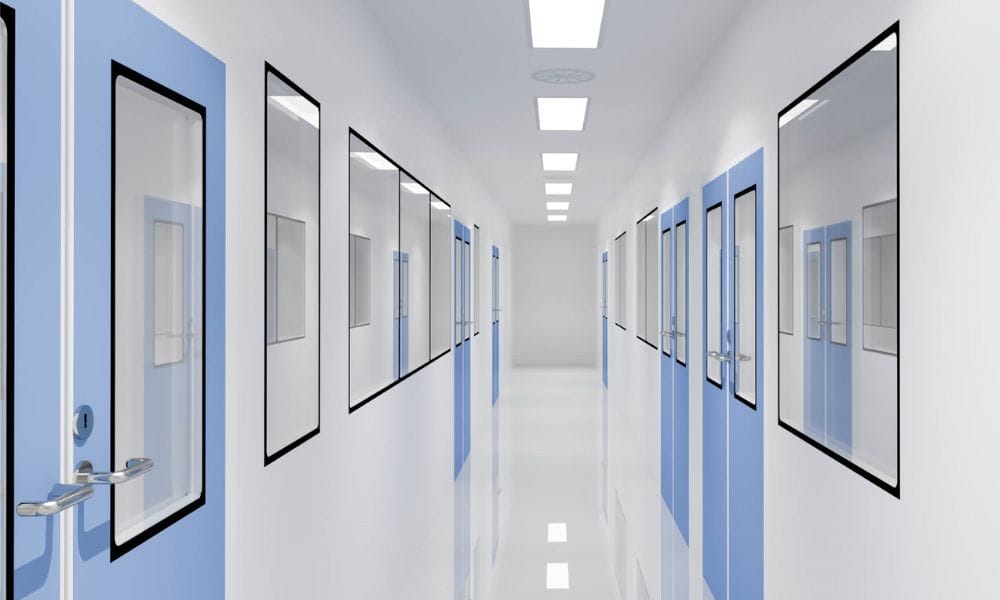Cleanrooms represent a cornerstone of many industries, as maintaining sterility and controlling contamination are paramount. Read on to learn about the most important cleanroom regulations in the pharmaceutical sector.
Door Regulations
It might seem insignificant, but cleanroom doors are among the most regulated aspects of all controlled environments. Doors play a pivotal role in maintaining the sterility of the environment. They must be designed to minimize the influx of contaminants while ensuring easy and efficient access for authorized personnel. High-speed roll-up doors are often used due to their ability to open and close rapidly, minimizing air exchange between the cleanroom and other areas. Alternatively, cleanrooms without power-assisted doors must feature inward-opening doors. This ensures the controlled environment maintains a higher pressure when individuals enter and exit.
Airflow Considerations
In a cleanroom, airflow isn’t merely about ventilation; it’s about controlling the entire environment to prevent contamination. Cleanrooms typically utilize High-Efficiency Particulate Air (HEPA) or Ultra Low Particulate Air (ULPA) filters to purify the air entering the room. Furthermore, sophisticated ventilation systems and architectural design create directional airflow that helps controlled environments maintain high standards in the most critical areas. For instance, unidirectional or laminar flow, where air moves in a single, consistent direction, is commonly used in highly sensitive areas. This is accomplished through carefully placed air supply and exhaust outlets, creating a steady stream of clean air that sweeps across the room. Achieving effective airflow isn’t a one-time setup. It requires regular monitoring and testing to meet cleanroom standards consistently.
Gowning & PPE Standards
According to ISO 14644-1 standards, every cleanroom class necessitates specific gowns and protective gear. For instance, coveralls, hairnets, and face masks are often used to minimize contamination risks. Moreover, personal items such as jewelry, makeup, and cell phones must be removed before entering the cleanroom. The selection of appropriate personal protective equipment (PPE) is crucial, as the garments should produce little or no particulate emissions. In addition to wearing the correct attire, individuals must follow specific gowning procedures that often include steps like thorough hand washing and donning bouffant caps to cover hair completely. Regulations regarding gowning and PPE are often the most stringent within the pharmaceutical sector due to the importance of patient safety. Importantly, following these specific best practices is undoubtedly one of the best ways to prevent cleanroom contamination.
Maintaining a cleanroom environment is a meticulous process that requires an understanding of various factors. To ensure a successful controlled setting, you must consider the many pharmaceutical cleanroom regulations impacting this important sector.








